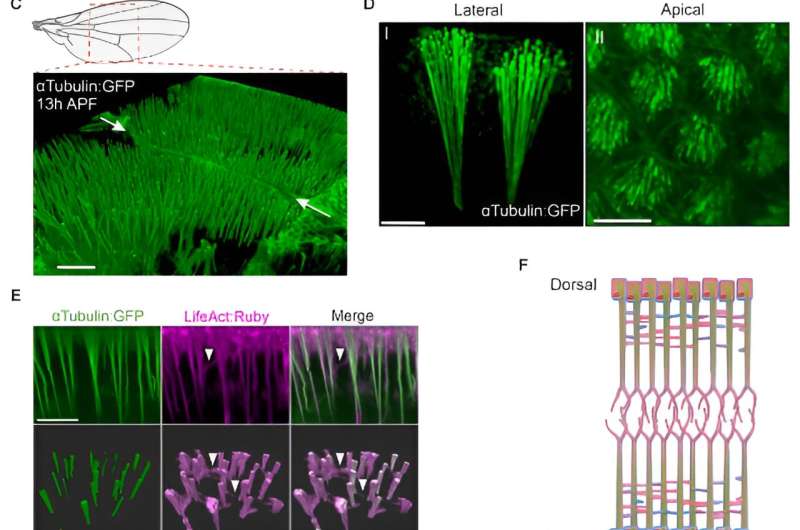This article has been reviewed according to Science X's editorial process and policies. Editors have highlighted the following attributes while ensuring the content's credibility:
fact-checked
proofread
Live imaging reveals key cell dynamics in 3D organ formation in Drosophila

Animal development requires successive changes in cell and tissue structures. To form complex 3D organs, cell shapes must adapt to support tissue morphogenesis. However, our understanding of how cellular structure changes are coupled with dynamic tissue morphogenesis is limited, largely due to reliance on studies of fixed tissues and cultured cells. Real-time observation of cell shape changes during morphogenesis is therefore crucial.
Researchers from the University of Tartu, Estonia, and the University of Helsinki, Finland, have introduced a 5D in vivo live-imaging protocol to observe 3D tissue dynamics with high resolution. They discovered that dorsal and ventral cells in the fruit fly Drosophila melanogaster's pupal wing form a cellular network, the Interplanar Amida Network (IPAN), through basal microtubule (MT) protrusions.
This network sustains cellular connections during early inflation stages and supports 3D tissue growth by allowing MTs to reorganize into mitotic spindles following programmed disassembly of cell-cell contacts. The findings are published in The EMBO Journal.
This study not only reveals the physiological significance of the IPAN but also provides insights into the challenges of live-imaging and genetic manipulation of protrusions. The findings suggest that the loss of cell-cell contacts functions as a key regulator of coordinated mitoses, a mechanism that may be applicable to 3D morphogenesis in multicellular organisms. The use of powerful Drosophila genetics tools in combination with multi-colored fluorescent in vivo live-imaging offers a comprehensive system to address questions about cell shape changes impacting tissue morphogenesis.
More information: Ngan Vi Tran et al, Programmed disassembly of a microtubule-based membrane protrusion network coordinates 3D epithelial morphogenesis in Drosophila, The EMBO Journal (2024). DOI: 10.1038/s44318-023-00025-w
Provided by Estonian Research Council


















